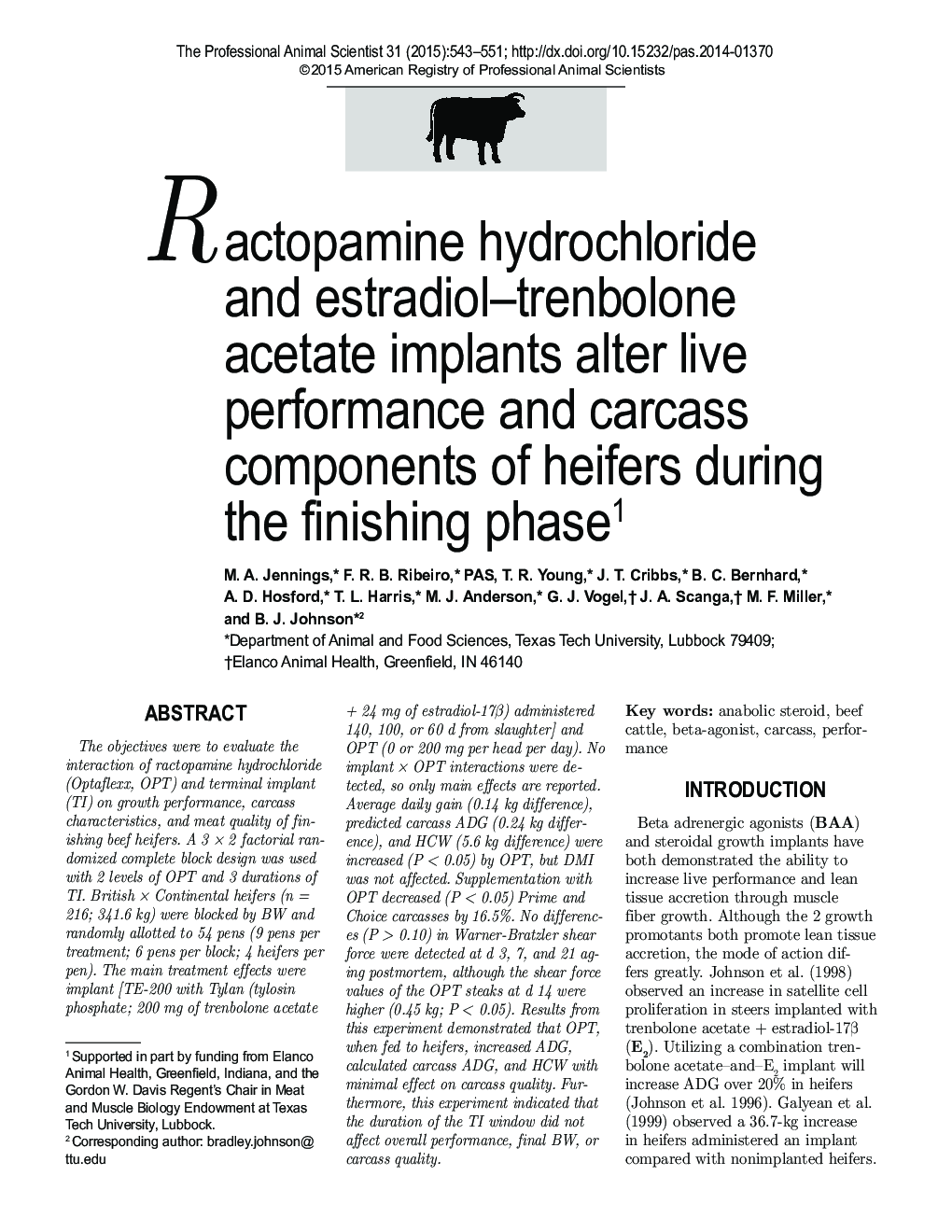| Article ID | Journal | Published Year | Pages | File Type |
|---|---|---|---|---|
| 2453793 | The Professional Animal Scientist | 2015 | 9 Pages |
Abstract
The objectives were to evaluate the interaction of ractopamine hydrochloride (Optaflexx, OPT) and terminal implant (TI) on growth performance, carcass characteristics, and meat quality of finishing beef heifers. A 3 à 2 factorial randomized complete block design was used with 2 levels of OPT and 3 durations of TI. British à Continental heifers (n = 216; 341.6 kg) were blocked by BW and randomly allotted to 54 pens (9 pens per treatment; 6 pens per block; 4 heifers per pen). The main treatment effects were implant [TE-200 with Tylan (tylosin phosphate; 200 mg of trenbolone acetate + 24 mg of estradiol-17β) administered 140, 100, or 60 d from slaughter] and OPT (0 or 200 mg per head per day). No implant à OPT interactions were detected, so only main effects are reported. Average daily gain (0.14 kg difference), predicted carcass ADG (0.24 kg difference), and HCW (5.6 kg difference) were increased (P < 0.05) by OPT, but DMI was not affected. Supplementation with OPT decreased (P < 0.05) Prime and Choice carcasses by 16.5%. No differences (P > 0.10) in Warner-Bratzler shear force were detected at d 3, 7, and 21 aging postmortem, although the shear force values of the OPT steaks at d 14 were higher (0.45 kg; P < 0.05). Results from this experiment demonstrated that OPT, when fed to heifers, increased ADG, calculated carcass ADG, and HCW with minimal effect on carcass quality. Furthermore, this experiment indicated that the duration of the TI window did not affect overall performance, final BW, or carcass quality.
Related Topics
Life Sciences
Agricultural and Biological Sciences
Animal Science and Zoology
Authors
M.A. PAS, F.R.B. Ribeiro, T.R. Young, J.T. Cribbs, B.C. Bernhard, A.D. Hosford, T.L. Harris, M.J. Anderson, G.J. Vogel, J.A. Scanga, M.F. Miller, B.J. Johnson,
